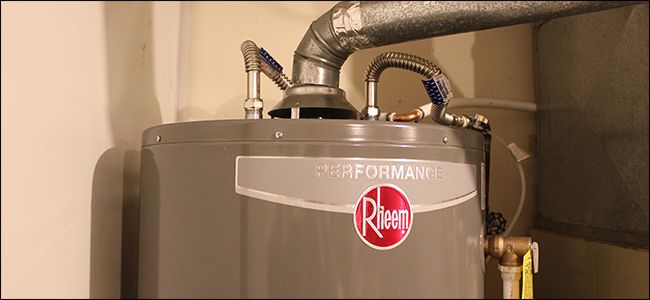Simple Ways to Maintain Your Home's Hot Water System ProperlyProfessional Advice on Maintaining Your Home's Hot Water System
Simple Ways to Maintain Your Home's Hot Water System ProperlyProfessional Advice on Maintaining Your Home's Hot Water System
Blog Article
Every person is bound to have their unique way of thinking in relation to How to Maintain Your Water Heater & Prolong its Life.

Warm water is crucial for day-to-day convenience, whether it's for a revitalizing shower or cleaning recipes. To guarantee your hot water system runs efficiently and lasts longer, regular maintenance is crucial. This post offers functional pointers and understandings on how to maintain your home's hot water system to avoid interruptions and expensive repair services.
Introduction
Maintaining your home's warm water system may seem difficult, however with a few straightforward steps, you can guarantee it runs efficiently for several years ahead. This guide covers everything from recognizing your warm water system to do it yourself upkeep pointers and recognizing when to contact professional help.
Relevance of Preserving Your Warm Water System
Routine upkeep not only extends the life-span of your warm water system however also guarantees it runs effectively. Neglecting maintenance can lead to lowered effectiveness, higher energy costs, and also early failing of the system.
Signs Your Hot Water System Demands Upkeep
Recognizing when your hot water system needs focus can protect against major issues. Look out for signs such as irregular water temperature level, weird sounds from the heating unit, or rusty water.
Understanding Your Warm Water System
Prior to diving right into maintenance jobs, it's valuable to recognize the fundamental components of your warm water system. Generally, this consists of the water heater itself, pipes, anode poles, and temperature controls.
Monthly Upkeep Tasks
Regular month-to-month checks can help capture minor issues before they rise.
Flushing the Water Heater
Purging your hot water heater removes debris accumulation, improving performance and extending its life.
Checking and Changing Anode Rods
Anode poles avoid deterioration inside the storage tank. Examining and changing them when worn is essential.
Evaluating and Changing Temperature Setups
Changing the temperature level settings makes certain ideal performance and security.
DIY Tips for Upkeep
You can carry out numerous maintenance tasks on your own to keep your hot water system in leading problem.
Looking for Leaks
Routinely check pipelines and links for leakages, as these can lead to water damage and higher expenses.
Checking Stress Alleviation Valves
Examining the stress safety valve guarantees it functions appropriately and protects against excessive pressure build-up.
Insulating Pipes
Protecting warm water pipelines decreases heat loss and can save energy.
When to Call a Professional
While DIY maintenance is useful, some issues call for professional expertise.
Facility Concerns Needing Expert Assistance
Instances consist of major leaks, electrical problems, or if your water heater is regularly underperforming.
Routine Professional Maintenance Benefits
Specialist upkeep can consist of detailed assessments, tune-ups, and making sure compliance with safety criteria.
Verdict
Routine maintenance of your home's hot water system is essential for effectiveness, long life, and expense savings. By adhering to these ideas and knowing when to look for expert aid, you can make sure a reliable supply of hot water without unanticipated interruptions.
How to Maintain an Instant Hot Water Heater
Before tinkering with your hot water heater, make sure that it’s not powered on. You also have to turn off the main circuit breaker and shut off the main gas line to prevent accidents. Also turn off the water valves connected to your unit to prevent water from flowing into and out of the appliance. 2. When you’re done, you have to detach the purge valves’ caps. These look like the letter “T” and are situated on either side of the water valves. Doing so will release any pressure that has accumulated inside the valves while at the same time avoid hot water from shooting out and burning your skin. 3. When the purge valves’ caps are removed, you have to connect your hosing lines to the valves. Your unit should have come with three hoses but if it didn’t, you can purchase these things from any hardware or home repair shops. You can also get them from retail stores that sell water heating systems. Read the user’s manual and follow it to complete this task properly. When the hosing lines are connected, open the purge port’s valves. 4. You should never use harsh chemical cleaners or solutions when cleaning your unit. Make use of white vinegar instead. It should be undiluted and you’ll probably use about 2 gallons. 5. Now flush your water heater. This task should probably take about 40 minutes. We can’t give you specific directions for this because the procedure is carried out depending on the type, model and brand of your heater. With that being said, refer to the user’s manual. 6. When you’re done draining the unit, you have to turn off the purge port valves again. Remove the hosing lines that you earlier installed on each of the water valves. Put the valve caps (purge port) back in their respective places and be very careful so as not to damage the rubber discs that are found inside these caps. 7. Now that everything’s back in place, check your user’s manual again to find out how to reactivate your water heating system. 8. Once it is working, turn one of your hot water faucets on just to let air pass through the heater’s water supply pipes. Leave the tap on until water flows smoothly out of it. https://www.orrplumbing.com/blog/2014/september/how-to-maintain-an-instant-hot-water-heater/

I discovered that piece of writing on Tips For Maintaining Your Hot Water Heater when doing a search on the search engines. Enjoyed our write up? Please quickly share it. Let others find it. Bless you for being here. Revisit us soon.
Call Today Report this page